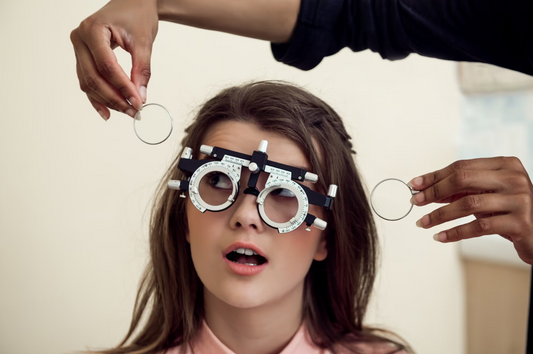Progressive glasses, also known as progressive lenses, are eyeglasses that have a multifocal lens design. These lenses provide a smooth and gradual transition of power from the top of the lens to the bottom, allowing wearers to see objects at various distances without having to change glasses.
The mechanics of progressive lenses
Progressive lenses have three different sections:
- The top section of the lens is designed to provide clear vision when looking at faraway objects.
- The middle section is designed for intermediate vision, which includes distances such as computer screens and dashboard displays.
- The bottom section of the lens is designed for near vision, such as reading a book or texting on a phone.
The power of the lens changes gradually between each section, allowing the wearer to see clearly at all distances without the need for separate glasses.
Benefits of progressive lenses
One of the most significant benefits of progressive lenses is the smooth transition between different distances. Unlike bifocal or trifocal lenses that have visible lines separating different sections, progressive lenses provide a seamless and natural transition, which is aesthetically pleasing.
Another advantage of progressive lenses is that they eliminate the need for multiple pairs of glasses or constantly switching between pairs. This convenience can be especially valuable for people who need to see clearly at different distances throughout the day.
Conclusion
Progressive glasses are an innovative solution that allows people with presbyopia to see clearly at multiple distances without changing glasses. By gradually increasing the power of the lens from top to bottom, these lenses provide a seamless and natural transition between different distances. If you're looking for a versatile and convenient eyewear option, progressive glasses may be the perfect fit for you.








